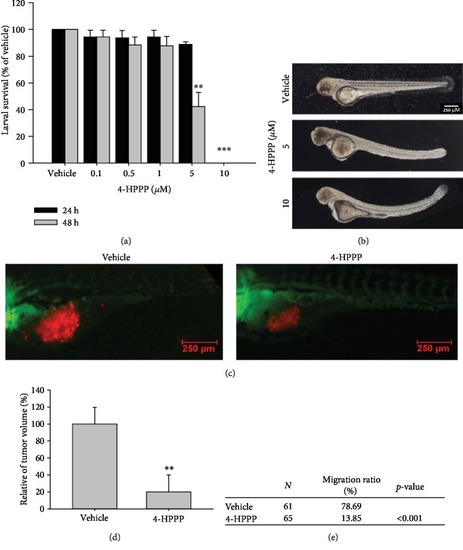Figure 9
- ID
- ZDB-FIG-200226-10
- Publication
- Liu et al., 2020 - The Phenoxyphenol Compound 4-HPPP Selectively Induces Antiproliferation Effects and Apoptosis in Human Lung Cancer Cells through Aneupolyploidization and ATR DNA Repair Signaling
- Other Figures
- All Figure Page
- Back to All Figure Page
|
Effect of 4-HPPP on zebrafish-based xenografted NSCLC cells. (a) Survival rate of zebrafish larvae following 4-HPPP exposure. (b) The results showed that 5 |

